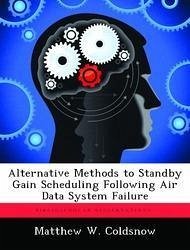Nicht lieferbar

Alternative Methods to Standby Gain Scheduling Following Air Data System Failure
Versandkostenfrei!
Nicht lieferbar
The United States Air Force has advanced fighter aircraft that lose the ability to operate in a large portion of their operating flight envelope when an air data system failure is experienced. These aircraft are reverted to a fixed set of standby-gains that limit their maneuverability, degrade handling qualities, and increase susceptibility to departure. The purpose of this research was to determine if three alternative methods of standby-gain-scheduling could provide robust control with minimal performance degradation despite the lack of air data. To accomplish this, three methods of standby-...
The United States Air Force has advanced fighter aircraft that lose the ability to operate in a large portion of their operating flight envelope when an air data system failure is experienced. These aircraft are reverted to a fixed set of standby-gains that limit their maneuverability, degrade handling qualities, and increase susceptibility to departure. The purpose of this research was to determine if three alternative methods of standby-gain-scheduling could provide robust control with minimal performance degradation despite the lack of air data. To accomplish this, three methods of standby-gain-scheduling were developed, integrated, and tested in the Infinity Cube simulator at the Air Force Research Laboratory/RBCD building. The first method improved upon an algorithm which used inertial data to estimate an aircrafts true velocity used to drive the gains in an F-16 controller. This algorithm was validated by post-processing high-fidelity simulator data and actual flight data. The second method simply used inertial velocities to drive the gains in an F-16 controller.












